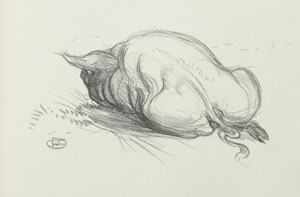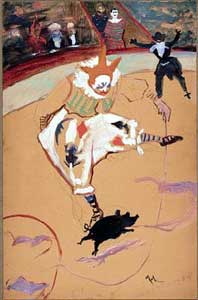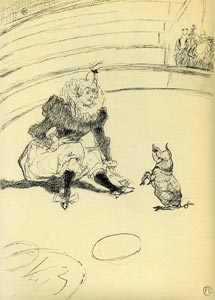French, (1864-1901)

-
Le Cochon
- [The Pig]
- (c. 1897-99), lithograph on Rives paper
- full book page: 12.4 x 8.7 in. (31.5 x 22 cm.)
- image: 3.8 x 7.3 in. (9.7 x 18.5 cm.)
- from: Jules Renard, Histoires Naturelles (Paris: Henri Floury, 1900)
-
Editor’s Note:
Lautrec asked author Jules Renard if he might illustrate his planned bestiary, Histoires Naturelles. The descriptive poems, Renard hoped, “would please the animals themselves”. The 22 lithographs for Renard’s first edition are some of Lautrec’s finest illustrations and the book itself is the prototype of nearly all modern bestiaries.
Pierre Bonnard was a personal friend of Lautrec. Both artists were featured in Renard’s 1904 edition of Histoires Naturelles (Paris: Hemmerlé, Petit & Co. for Ernest Flammario, 1904).
About the Artist
Henri de Toulouse-Lautrec, French, (1864-1901). Henri de Toulouse-Lautrec is often thought of as the archetypical bohemian artist of the belle époque, the “beautiful era” in Paris in the last decade of the 19th century. Lautrec gave himself up fully to the bohemian life, spending much of his time drinking, carousing and constantly sketching in cabarets, racetracks, and brothels.
Lautrec adapted the ‘Japanese style’ popular in French art of the time — flat areas of color in asymmetric compositions — for his use in his poster advertisements as well as his art. He created artworks that both memorialized his friends and advertised their venues.
His technique of extreme simplification in outline and movement and the use of free-flowing, expressive line resulted in highly rhythmical compositions with large color planes. Lautrec also had a terrific psychological insight, observing and documenting the personalities and social activities of Parisian nightlife and popular culture in the 1890s.



